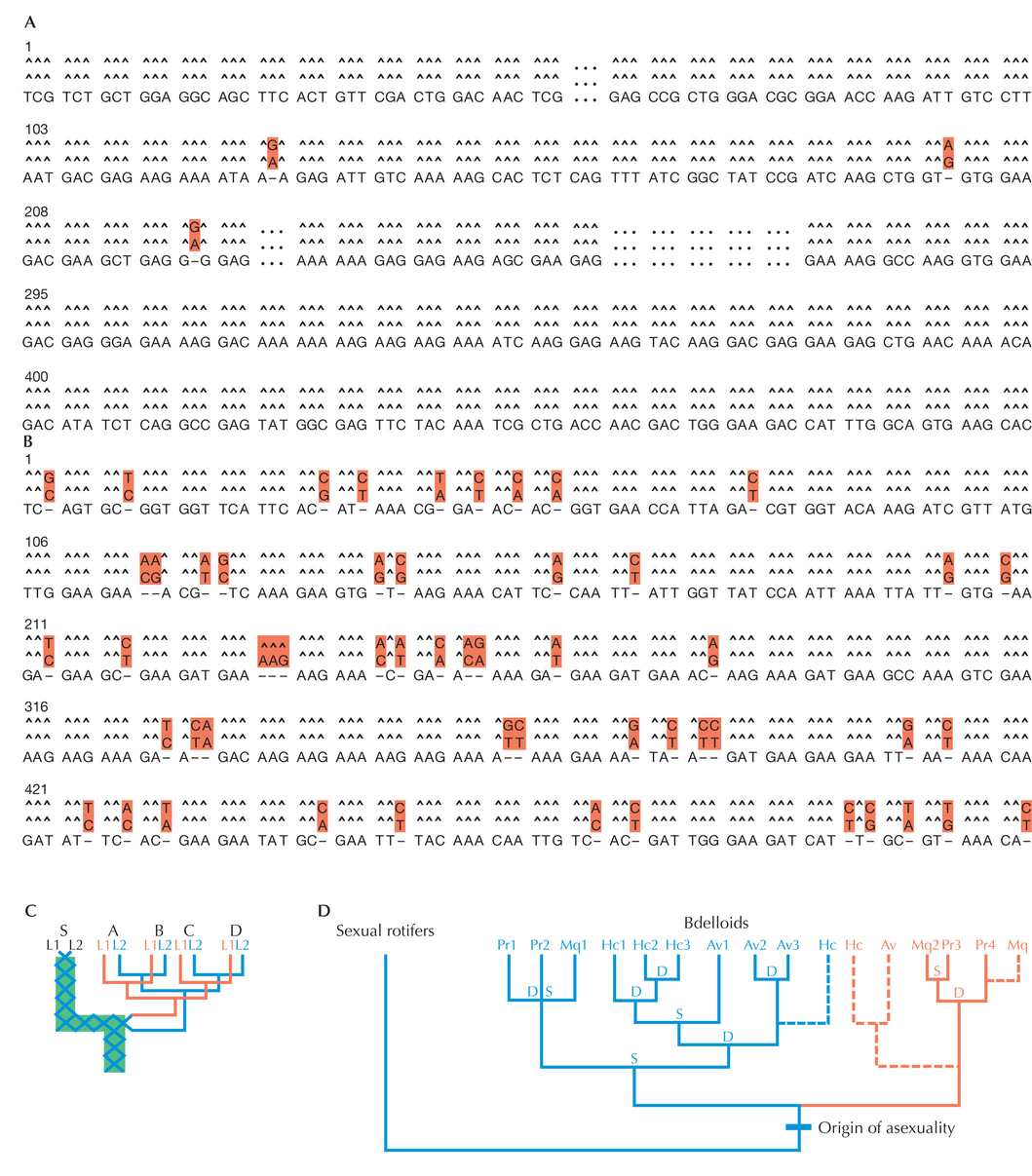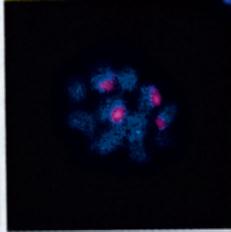

E
Figure WN23.6. (A) Two hsp82 sequences from within the sexual monogonont rotifer species Brachionus plicatilis. (B) Two hsp82 sequences found within the asexual bdelloid rotifer M. quadricornifera. (C) In a sexual species (S), the two homologous copies of an allele remain similar, because they trace back to a common ancestor ~2Ne generations ago. However, in an asexual species, the two alleles remain as separate lineages, and so extreme divergence is expected between the two. (A–D denote different asexual species or individuals.) (D) Two-letter codes denote species (see A). D denotes a gene duplication event and S denotes a speciation event. Dotted lines denote divergent copies that were expected, but not detected in this 2000 study of David Mark Welch and Matthew Meselson. (E) In situ hybridization of the hsp82 sequences to the chromosome of P. roseola shows that they are present in four copies (red), as expected if there has been gene duplication. (A,B, Redrawn from Fig. 2 in Welch and Meselson 2000. C,D, Redrawn from Boxes 1a and 1c of Butlin 2002. E, Reprinted from Fig. 1B (upper right) of Welch et al. 2004a.)
| © 2007-2010 by Cold Spring Harbor Laboratory Press. All rights reserved. |
| The reproduction, modification, storage in a retrieval system, or retransmission, in any form or by any means, electronic, mechanical, or otherwise, for reasons other than personal, noncommercial use is strictly prohibited without prior written permission. You are authorized to download one copy of the material on this Web site for personal, noncommercial use only. The material made available on this Web site is protected by United States copyright laws and is provided solely for the use of instructors in teaching their courses and assessing student learning. Dissemination or sale of any of this material, as a whole or in parts (including on the World Wide Web), is not permitted. All users of these materials and visitors to this Web site are expected to abide by these restrictions. Requests for permission for other uses of this material should be directed to Cold Spring Harbor Laboratory Press, 1 Bungtown Road, Cold Spring Harbor, NY 11724 or submitted via our World Wide Web Site at http://www.cshlpress.com/. |